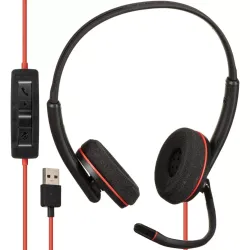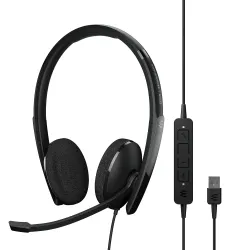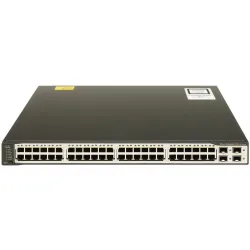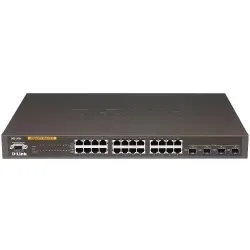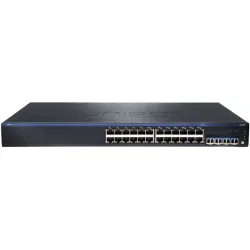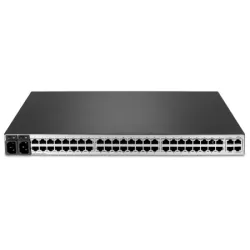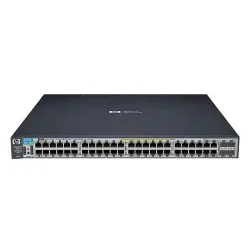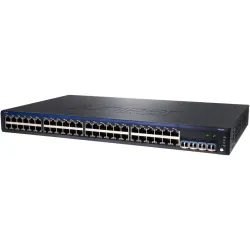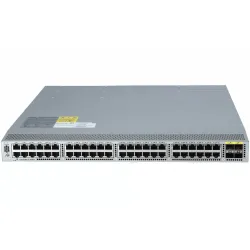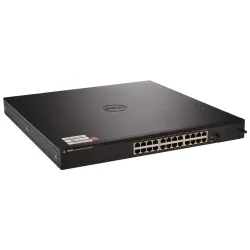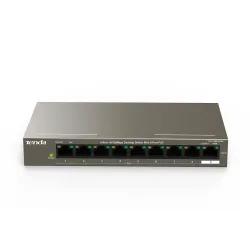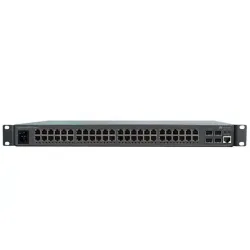Get the Best Deals on Cisco Dell HP IBM at Good Prices and Also Know its Types and Features
Introduction to Managed Switches
A managed switch is a network switch that allows administrators to configure, monitor, and manage network traffic. Unlike unmanaged switches, which operate with a default configuration and cannot be modified, managed switches offer greater control and flexibility in managing network traffic.
Managed switches allow administrators to segment networks, prioritize traffic, and monitor network performance. They also provide features such as VLANs (Virtual Local Area Networks), Quality of Service (QoS), and port mirroring.
VLANs allow administrators to segment a network into virtual networks, which can be isolated from one another to improve security and optimize network performance. QoS allows administrators to prioritize traffic on the network, ensuring that important traffic such as VoIP (Voice over IP) and video conferencing receive the necessary bandwidth to function properly. Port mirroring enables administrators to monitor traffic on a specific port or set of ports, which can help troubleshoot network issues.
Managed switches are typically more expensive than unmanaged switches and require some level of technical expertise to configure and manage. However, for organizations with complex networks or high bandwidth requirements, managed switches are an essential tool for managing network traffic and ensuring optimal network performance.
Types of Managed Switches
There are several types of managed switches available in the market, each with its own set of features and capabilities. The main types of managed switches are:
Layer 2 Managed Switches:
These switches operate at the Data Link Layer (Layer 2) of the OSI model and provide features such as VLANs, Link Aggregation Control Protocol (LACP), and Spanning Tree Protocol (STP).
Layer 3 Managed Switches:
These switches operate at the Network Layer (Layer 3) of the OSI model and provide advanced routing and switching capabilities, including support for static and dynamic routing protocols such as OSPF (Open Shortest Path First) and BGP (Border Gateway Protocol).
Layer 4-7 Managed Switches:
These switches operate at the Transport Layer (Layer 4) and above of the OSI model and provide advanced traffic management and application-aware services, including firewalling, load balancing, and application acceleration.
Stackable Managed Switches:
These switches allow multiple switches to be interconnected and managed as a single unit, providing scalability and easier management.
Modular Managed Switches:
These switches allow administrators to add or remove modules to customize the switch's capabilities according to their requirements.
Cloud-Managed Switches:
These switches are managed through a cloud-based management interface, providing administrators with remote access to manage the network from anywhere.
Each type of managed switch offers different capabilities and features, and the selection of the appropriate type of switch depends on the organization's requirements, network size, and budget.
Different Brands In managed switch
There are several brands of managed switches available in the market, each with its unique features, capabilities, and price points. Some of the popular brands of managed switches include:
These brands offer various types of managed switches, including Layer 2 switches, Layer 3 switches, PoE switches, and more. When choosing a managed switch, it's important to consider factors such as the number of ports, network speed, and the features needed for your specific network requirements.
Juniper Networks
Arista Networks
Hewlett Packard Enterprise (HPE)
Dell Technologies
NETGEAR
TP-Link
Ubiquiti Networks
D-Link
MikroTik
Key Features of Managed Switches
Managed switches offer a wide range of features and capabilities that enable administrators to manage, monitor, and optimize network traffic. Some of the key features of managed switches include:
VLANs:
VLANs enable administrators to segment a network into multiple virtual networks, which can be isolated from one another to improve security and optimize network performance.
Quality of Service (QoS):
QoS enables administrators to prioritize traffic on the network, ensuring that important traffic such as VoIP and video conferencing receive the necessary bandwidth to function properly.
Link Aggregation Control Protocol (LACP):
LACP enables administrators to combine multiple physical links into a single logical link, providing higher bandwidth and redundancy.
Spanning Tree Protocol (STP):
STP enables administrators to prevent network loops and ensure network reliability.
Port Mirroring:
Port mirroring enables administrators to monitor traffic on a specific port or set of ports, which can help troubleshoot network issues.
Layer 3 Routing:
Layer 3 routing enables administrators to route traffic between different subnets and VLANs, providing advanced routing capabilities.
Security Features:
Managed switches offer various security features such as access control lists (ACLs), DHCP snooping, and port security to improve network security.
SNMP Management:
Simple Network Management Protocol (SNMP) enables administrators to monitor and manage network devices remotely.
Redundancy Features:
Managed switches offer redundancy features such as Rapid Spanning Tree Protocol (RSTP) and Link Aggregation Control Protocol (LACP) to ensure network reliability.
Management Interfaces:
Managed switches offer various management interfaces such as web-based, command line interface (CLI), and Simple Network Management Protocol (SNMP) to enable administrators to manage and configure the switch.
A managed switch is a type of computer networking device that allows for greater control over network traffic and provides advanced features not available in unmanaged switches. Unlike unmanaged switches, which are plug-and-play devices that require no configuration, managed switches can be configured to perform various functions such as VLANs, Quality of Service (QoS) settings, and Port Mirroring.Managed switches offer administrators greater control over the network, allowing them to monitor and control traffic flow, segment the network into virtual LANs (VLANs), and prioritize traffic based on specific applications or user groups. They also offer enhanced security features, such as port authentication and Access Control Lists (ACLs), which help prevent unauthorized access to the network.
Managed switches offer several benefits over unmanaged switches. First and foremost, they provide greater control over network traffic and can be configured to perform various functions, such as VLANs, QoS settings, and Port Mirroring. This level of control allows administrators to monitor and control traffic flow, segment the network into virtual LANs (VLANs), and prioritize traffic based on specific applications or user groups.
In a managed switch, the primary difference between Layer 2 and Layer 3 is the level of network routing capability they provide.Layer 2 switches operate at the Data Link Layer of the OSI model, which means they can only operate within a single network segment or broadcast domain. They use MAC addresses to identify and forward frames within the same LAN (Local Area Network), and they typically do not have the ability to perform routing functions between different networks.Layer 3 switches, on the other hand, operate at the Network Layer of the OSI model and can perform basic routing functions. They have the ability to route traffic between different networks based on IP addresses, allowing them to connect multiple network segments and provide inter-VLAN routing. This makes them more versatile and flexible than Layer 2 switches, as they can be used to connect multiple networks and subnets.
A managed switch is a network switch that provides a range of advanced features and functions, which can be configured and managed by an administrator. Managed switches operate by processing and forwarding network traffic between connected devices, while also providing additional functionality such as VLANs, Quality of Service (QoS) settings, and security features.s
Refurbished
Refurbished
Refurbished
Refurbished
Refurbished
Refurbished
Refurbished
Refurbished
New
Refurbished

